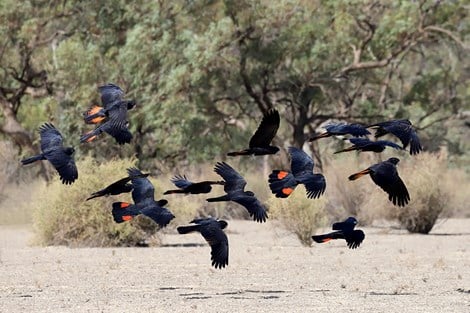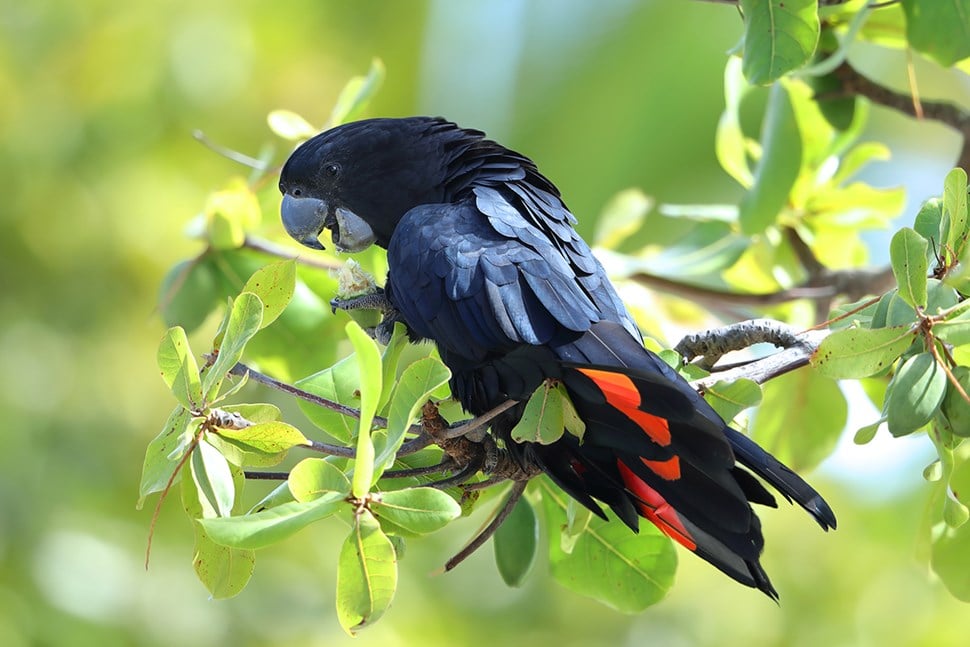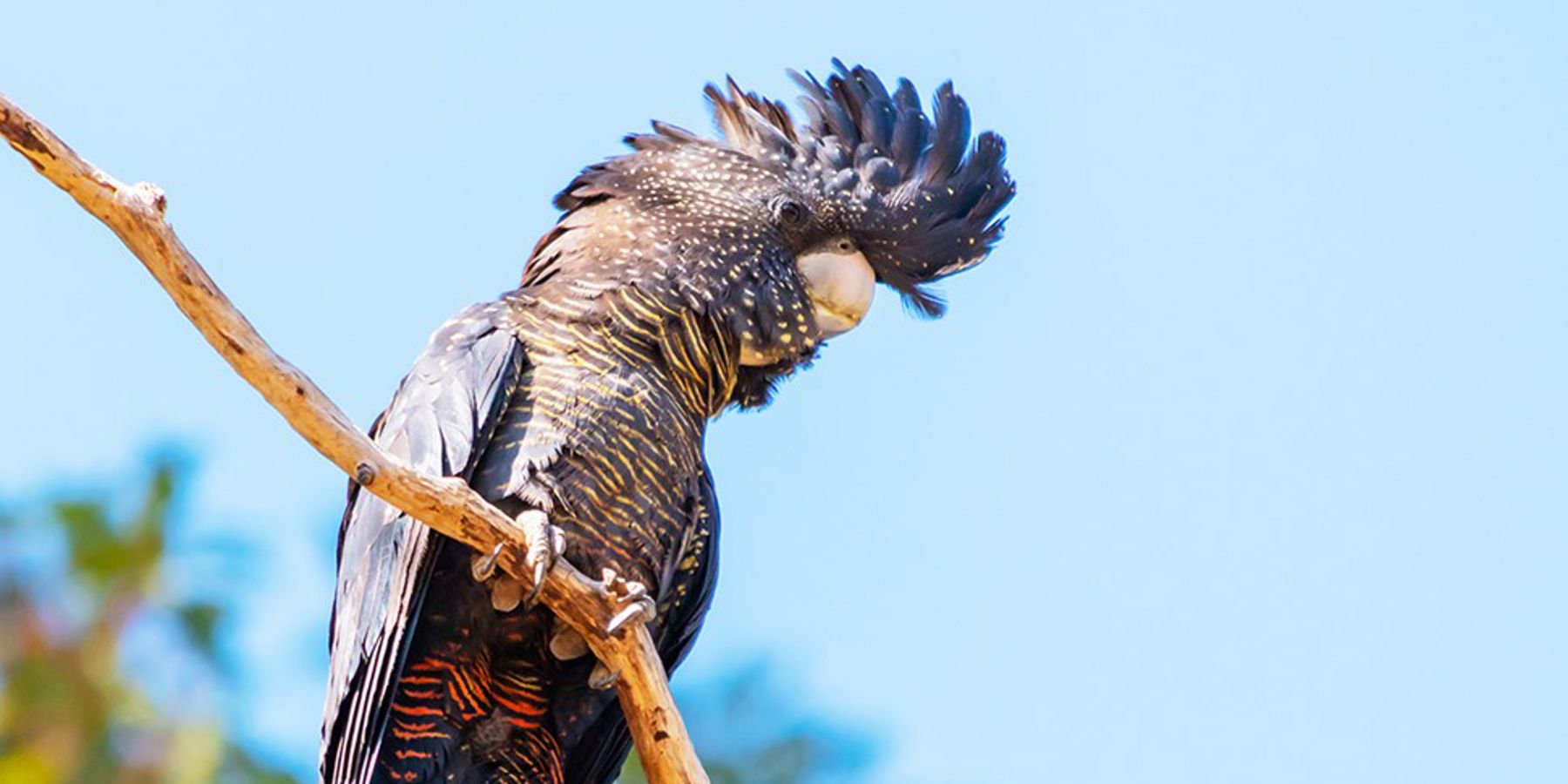Red-tailed black cockatoos are a threatened bird species and unfortunately, they like to perch on powerlines.
To a bird, a powerline looks like the perfect perch to safely rest or nest on.
Unfortunately, it’s not always a happy outcome.
Birds flying directly into powerlines or coming into contact with electrical equipment can lead to electrocution, power faults and fires. And while it doesn’t happen very often, we take the safety of wildlife around the network seriously.
What are we doing to make the network safer for threatened bird species?
There’s a lot that goes on behind the scenes to protect threatened bird species from our electrical lines and equipment, while also ensuring a safe and reliable power supply.
When we do hear about an incident from our field crews, we make sure the area is properly investigated and safeguards are put in place to help prevent future tragedies to wildlife.
Michelle Davies, Assessment and Approvals Specialist from the Environmental, Safety and Planning Assessment team, explains what happens when they get the call.
Protecting vulnerable red-tailed black cockatoos in Parkerville

Red-tailed black cockatoos (Calyptorhynchus banksii naso) are a threatened species mainly found in forests around the Perth hills and the South West corner of our state.
“Within this area, there are small sections where the tops of poles aren’t insulated. If a bird comes into contact with these, they run the risk of electrocution,” says Michelle.
This was the unfortunate case recently in Parkerville, where two red-tailed black cockatoos were electrocuted on high voltage power poles.
The conductors and connections on the pole were insulated, but the birds came into contact with the short cross-arm of the pole, which wasn’t insulated, resulting in their misfortune.
Network Response Officer, Juan van Deventer, was the first to discover the incident.
“It’s unfortunate when any wildlife comes into contact with the network, but especially when it’s a threatened species. I knew they were red-tailed black cockatoos – they are unique and easily identifiable. I noted this down in my report so the Environment team could investigate a solution to prevent it happening again,” says Juan.
To protect this threatened bird, we're putting measures in place to make sure they don't get electrocuted if they perch on our powerlines.
What can be done to protect threatened bird species?
Birds are social and like to touch one another when on poles. If one sits on a conductor and another on pole or conductor and they touch each other, it will create a short circuit and both will be electrocuted. So what are we doing to prevent this from happening?
1. Installing bird covers
To make an area safer for birds, we can install bird covers (matt tapes or adhesive spikes) on the cross arms and also insulate all bare conductors and fittings around the cross arm. Sometimes, where necessary, we also install anti-swan cross arms. These are long cross arms to separate conductors further so that birds sitting on them cannot touch each other
2. Pruning branches near the power poles
Another measure we take is to prune tree branches around the power poles so that birds sitting on branches do not make contact with conductors or cross arms.
This has the added benefit of preventing possums jumping on to the pole cross arms.
3. Wildlife protection requirements in tenders
Another proactive approach we're taking is for new asset tenders - we make sure that wildlife protection is considered in the technical specifications. For example, the new Pole Top Switches we use have a larger gap between the live and earth components creating increased space for fauna to move and reducing risk of simultaneous contact.
Juan van Deventer, our Network Response Officer, discovered the incident and worked with our Assessment and Approvals Specialist to prevent it happening again.
What we did in response
Red-tailed black cockatoos are listed as vulnerable under the Biodiversity Conservation Act 2016 and Commonwealth Environmental Protection and Biodiversity Conservation Act 1999. We reported the incident to the Department of Biodiversity, Conservation and Attractions (DBCA), as they maintain the fauna distribution data.
Michelle worked with other areas of the business to investigate and determine the best solution to prevent such occurrences in the future. This included carrying out an environmental assessment in the area.
Juan provided Michelle with an accurate report of the incident along with photos to correctly determine the birdlife impacted. This also assists with identifying the point of electrocution to address the appropriate wildlife mitigation solution available to Western Power.
Armed with all of this information, Michelle was able to quickly provide recommendations using a specially developed in-house risk and assessment tool.
Within two days, a bird cover was installed on the pole to deter birds from perching on the pole.

Why don’t you install bird covers everywhere?
“Installing bird covers across all of our infrastructure isn’t a viable solution at the moment,” says Michelle,“but by carrying out a proper assessment when something does happen, we can ensure any threatened species like birds or ring-tail possums are better protected.”
For all new powerlines installed, we carry out environmental studies and look at installing bird diverters where needed. Spiral bird diverters are quite heavy, which means different engineering considerations are needed to ensure they can be supported.
We’re fortunate to have unique and diverse wildlife here in WA and we’re committed to helping protect it.
Find out more about how we’re helping to protect the environment we operate in…
